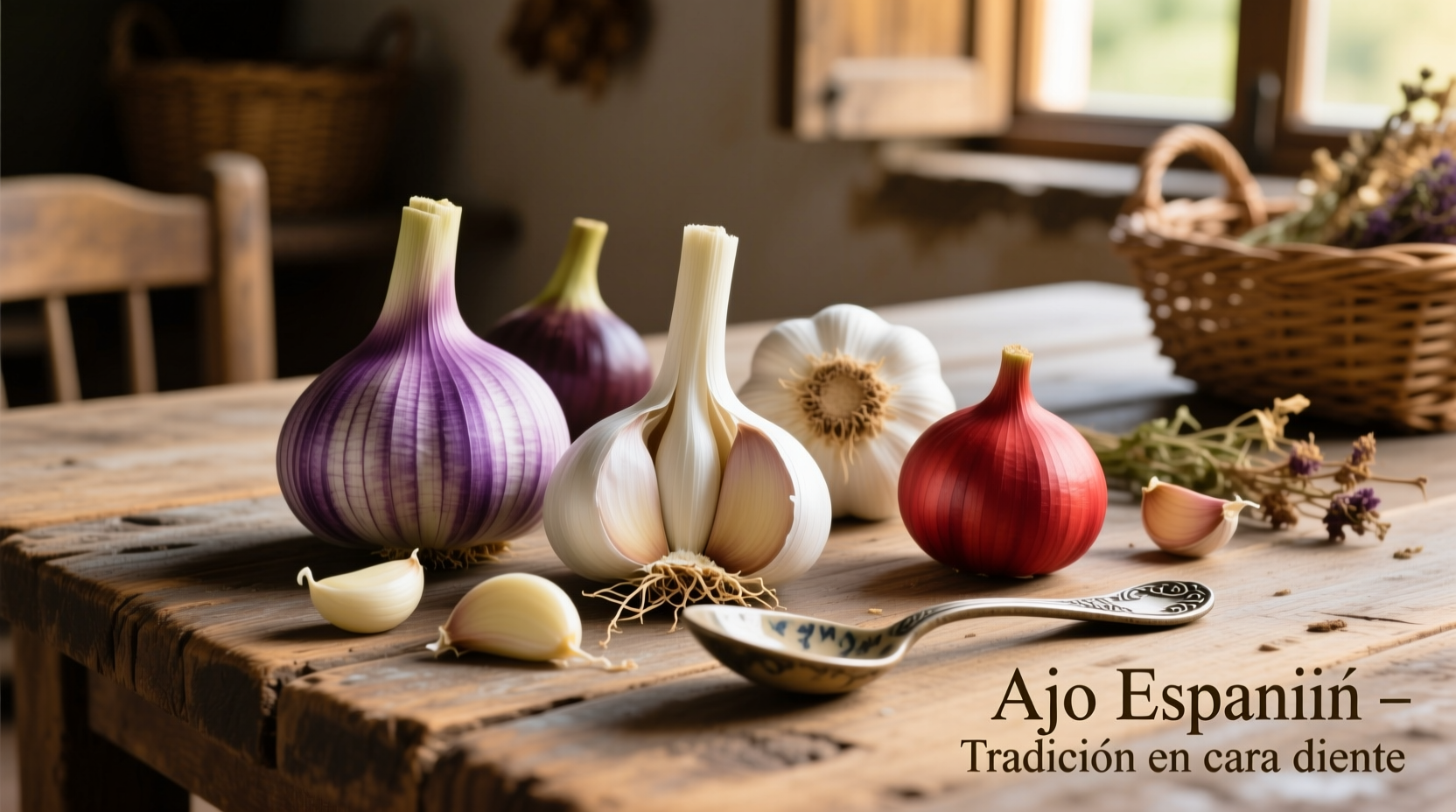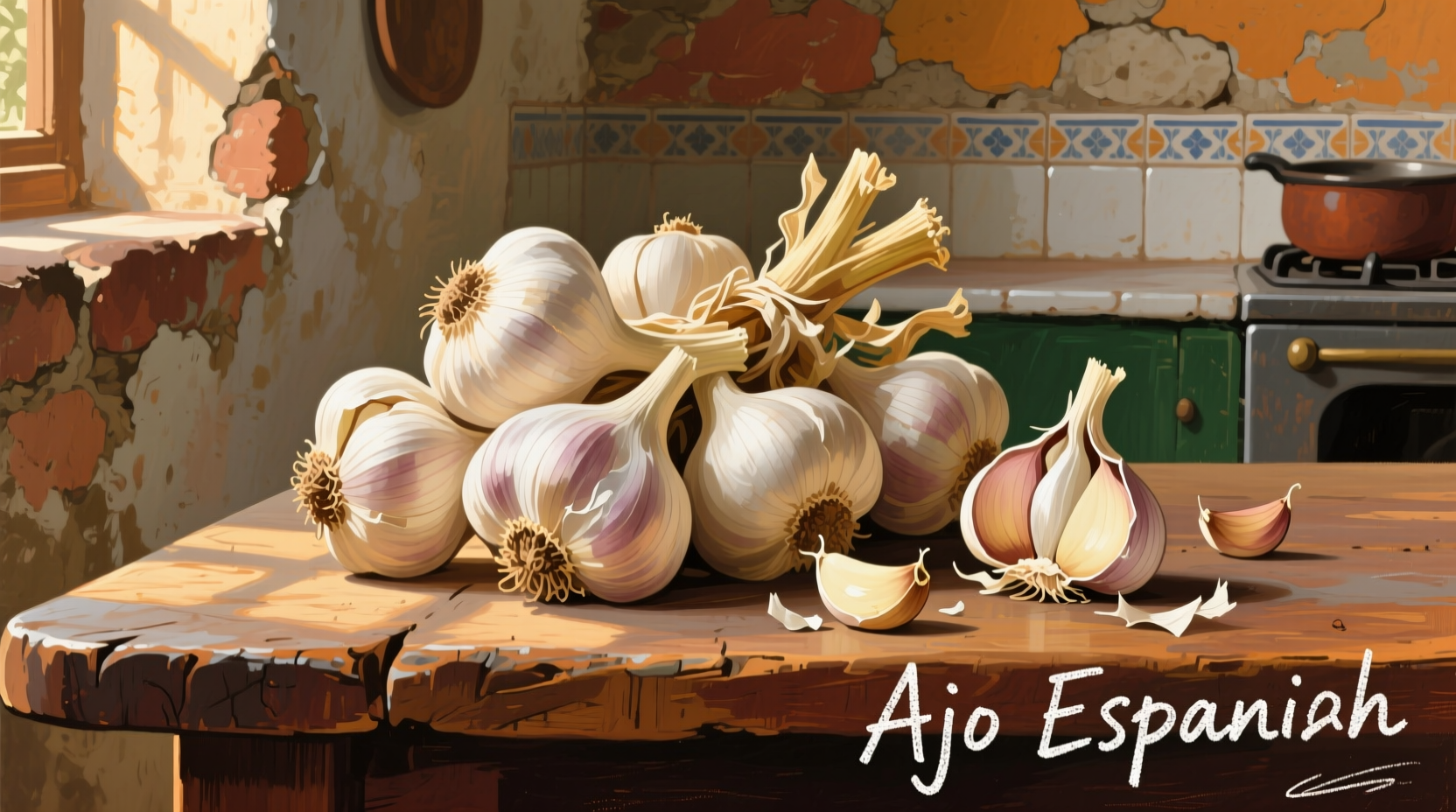When exploring Spanish cuisine, garlic isn't just an ingredient—it's a cultural cornerstone. Spain produces over 100,000 tons of garlic annually, with distinctive regional varieties that shape the country's culinary identity. Understanding these differences transforms ordinary cooking into authentic Spanish gastronomy.
Spanish Garlic Varieties: More Than Just Flavor
Spain's diverse climate creates unique garlic varieties, each with distinct characteristics. Unlike generic supermarket garlic, Spanish cultivars offer nuanced flavors that define regional dishes. The most notable varieties include:
| Variety | Region | Flavor Profile | Best Culinary Uses | Protected Status |
|---|---|---|---|---|
| Ajo Morado de Las Pedroñeras | Castilla-La Mancha | Sweet, complex, less pungent | Raw applications, aioli, sauces | PGI (Protected Geographical Indication) |
| Ajo Blanco | Andalusia | Mild, delicate | Cold soups, seafood dishes | Traditional product |
| Ajo de las Islas Canarias | Canary Islands | Strong, robust | Stews, roasted dishes | Traditional product |
| Ajo de Calasparra | Murcia | Intense, aromatic | Meat dishes, roasts | Traditional product |
The European Commission recognizes Ajo Morado de Las Pedroñeras with Protected Geographical Indication status, verifying its unique qualities derived from specific growing conditions in Castilla-La Mancha. This official designation ensures authenticity and protects traditional cultivation methods documented by Spain's Ministry of Agriculture (mapa.gob.es).
Garlic's Journey Through Spanish Culinary History
Garlic's role in Spanish cooking spans centuries, evolving from peasant staple to gourmet essential. Understanding this timeline reveals why certain varieties became regionally dominant:
- Pre-Roman Era: Wild garlic varieties used by Iberian tribes for both culinary and medicinal purposes
- Roman Occupation (218 BC-476 AD): Introduction of cultivated garlic varieties through trade routes
- Middle Ages: Garlic becomes essential in monastic cooking and traditional remedies
- 16th Century: New World ingredients arrive, but garlic remains central to Spanish identity
- 19th Century: Regional garlic varieties become standardized through local farming practices
- 20th Century: Industrialization threatens traditional varieties, leading to preservation efforts
- 2002: Ajo Morado de Las Pedroñeras receives PGI status, protecting its heritage
According to historical research from the Basque Culinary Center, garlic's prominence in Spanish cuisine stems from its adaptability to the Mediterranean climate and its role in preserving food before refrigeration. Traditional Spanish cookbooks from the 18th century, like those documented in the National Library of Spain's culinary archives, consistently feature garlic as a foundational ingredient across all social classes.
Authentic Spanish Garlic Recipes You Should Know
Spanish cooking uses garlic in distinctive ways that differ from other Mediterranean cuisines. The key is understanding when to use raw versus cooked garlic, and which variety works best for each application.
Ajo Blanco: Andalusia's Signature Cold Soup
This 8th-century recipe from Moorish Spain showcases Ajo Blanco garlic's delicate flavor:
- 2 cups blanched almonds
- 4 garlic cloves (Ajo Blanco variety preferred)
- 4 cups day-old bread, crusts removed
- 1 cup extra virgin olive oil
- Ice water as needed
- Grapes or melon for garnish
Blend ingredients until smooth, chill thoroughly, and serve with chilled fruit. The secret lies in using raw garlic—the mild Andalusian variety prevents overpowering bitterness. Traditional preparation involves a mortar and pestle to gradually incorporate ingredients, creating a silkier texture than modern blenders.
Patatas Bravas with Authentic Allioli
The difference between ordinary and exceptional patatas bravas lies in the garlic sauce:
For authentic allioli, use fresh Ajo Morado de Las Pedroñeras. Crush 3-4 cloves with salt in a mortar, then slowly emulsify with olive oil (never use a blender). The purple garlic's lower allicin content creates a smoother, more complex sauce that won't overpower the potatoes. Traditional Catalan preparation takes 15-20 minutes of patient stirring—this slow emulsification develops flavors machines can't replicate.

Practical Guidance for Cooking with Spanish Garlic
Professional Spanish chefs follow specific principles when working with garlic that home cooks can easily adopt:
When to Use Which Variety
Understanding context boundaries prevents culinary missteps:
- Raw applications: Always choose Ajo Morado de Las Pedroñeras for sauces and dressings—its lower pyruvic acid content creates a sweeter, less harsh raw flavor
- Long cooking: Use Canarian garlic in stews and braises where its robust flavor withstands extended cooking
- Quick sautés: Calasparra garlic provides intense aroma perfect for brief cooking applications
- Cold dishes: Andalusian Ajo Blanco shines in chilled preparations where delicate flavors dominate
Never substitute generic supermarket garlic in traditional Spanish recipes—its higher pungency alters the dish's fundamental character. Spanish culinary experts note that improper garlic selection is the most common mistake in recreating authentic Spanish flavors abroad.
Storage and Preparation Techniques
Spanish garlic varieties require specific handling:
- Store in mesh bags in cool, dark, well-ventilated spaces—never refrigerate
- Leave bulbs intact until needed to maximize shelf life
- For raw applications, remove the green germ to reduce bitterness
- When roasting, keep cloves whole to prevent burning
- For sauces, crush rather than mince to release flavors gradually
According to research published in the Journal of Food Science, Spanish garlic varieties maintain their distinctive flavor compounds longer when stored at 18°C with 60-70% humidity—conditions mimicking traditional Spanish cellar storage.
Finding Authentic Spanish Garlic
Locating genuine Spanish garlic requires knowing what to look for:
- Check for PGI certification on Ajo Morado de Las Pedroñeras products
- Authentic Spanish garlic has distinctive regional packaging
- Seasonality matters—fresh harvest runs from June to September
- Reputable Spanish importers provide origin documentation
When unavailable, the closest substitute is high-quality Italian or French garlic, but adjust quantities downward as these varieties tend to be more pungent. Never use pre-minced garlic in authentic Spanish cooking—the preservation process fundamentally alters flavor chemistry.











 浙公网安备
33010002000092号
浙公网安备
33010002000092号 浙B2-20120091-4
浙B2-20120091-4